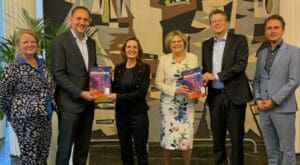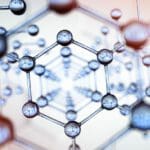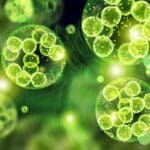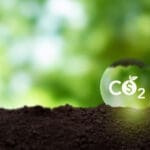On October 1, ChemistryNL chair Jacqueline Vaessen, along with board member and CEO Tom van Aken, presented the Innovative Chemistry Investment Agenda in The Hague to Erwin Nijsse, Director-General for Business and Innovation at the Ministry of Economic Affairs, and Esther Pijs, Director-General for Green Growth Realization at the Ministry of Climate and Green Growth. The investment agenda was commissioned by the ministries in collaboration with InvestNL, the Netherlands Enterprise Agency (RVO.nl), and ChemistryNL.
Capital Requirements
The Innovative Chemistry Investment Agenda – Capital Requirements for Chemistry Innovation Projects in the Netherlands identifies the capital requirements for the thirty most promising pilot projects and ten promising demonstration projects within the innovative chemistry sector that can be realized in the Netherlands within five years. The total required investment volume is approximately two billion euros. The focus is on green and circular basic chemistry and knowledge-intensive materials. These are essential for the energy transition, applications in the high-tech manufacturing industry, the raw materials transition, and strengthening the strategic autonomy of the Netherlands and Europe.

Scaling Up
Innovative chemistry plays a key role in developing sustainable alternatives to fossil fuels and closing cycles. However, attracting funding for scaling up to pilot and demonstration facilities often proves difficult due to high risks, long payback periods, and uncertain markets. The authors of the advisory report therefore emphasize the importance of public-private partnerships throughout the entire value chain, predictable preconditions, and targeted investment instruments.
Investment Funds
The agenda, developed in collaboration with InvestNL, the Netherlands Enterprise Agency (RVO.nl), and the ministries, offers concrete insights for policy and investment funds. This is based on data from the RVO.nl and InvestNL, as well as additional expert assessments. It also highlights examples of promising Dutch initiatives, such as Blue Plastics (circular plastics), Back to Battery (battery recycling), SusPhos (phosphate recycling), Mevaldi (biobased building blocks), and Carbyon (carbon capture). “With this investment agenda, we show where the opportunities lie, but also where support is needed to bring innovations to market faster,” says ChemistryNL chair Jacqueline Vaessen. “This agenda quantifies the capital requirements for a strategic growth market and can also help Peter Wennink in his role as advisor on strengthening the investment climate and earning capacity.”
Erwin Nijsse, Director-General for Business and Innovation: “This agenda provides a good overview of the significant potential for innovative chemistry in the Netherlands that can be scaled up by 2030 and quantifies what is needed to achieve this. This agenda, just before the elections, clearly demonstrates the potential of an attractive investment climate in terms of new earning potential. I encourage ChemistryNL to submit this to Peter Wennink for the Dutch investment agenda.”
Esther Pijs, Director-General for Realization of Green Growth, endorses this importance: “We desperately need innovative chemistry to achieve our climate and circular economy goals. This agenda offers a clear overview of the investment opportunities and helps us, together with companies and financiers, create the right framework.”
Read the Innovative Chemistry Investment Agenda here (in Dutch)




